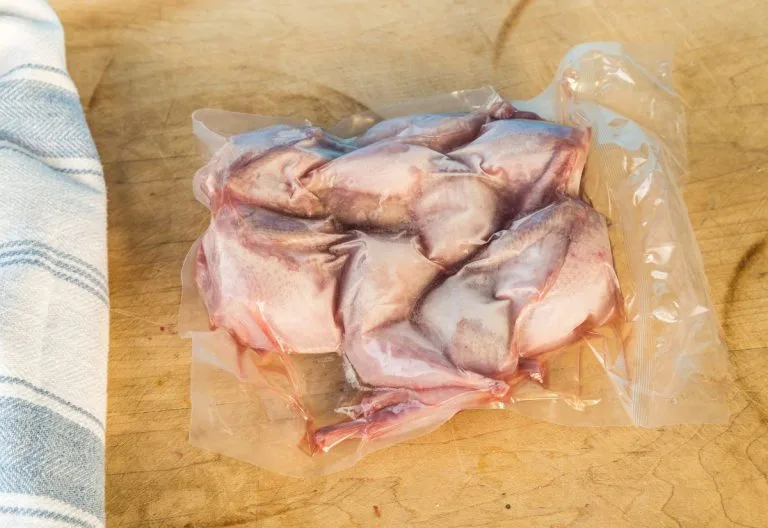How to Price Live Quail for Sale (Without Shortchanging Yourself)
If you’ve been raising Coturnix for a while and are thinking about selling some, pricing is usually the part that makes people stop and scratch their heads. Whether you’re offering day-old chicks, started juveniles, or full-grown layers, your pricing needs to cover your costs and keep you competitive.
I’ve been raising Coturnix for over a decade, and if there’s one thing I’ve learned, it’s that pricing isn’t just about math. It’s about setting things up so they actually last. Here’s how I break down pricing and what I’ve learned about setting fair, sustainable rates.
Know Your Costs
Before you put a price tag on a single bird, get clear on what it’s costing you to raise them. I’m talking feed, bedding, housing, electric bills… everything. If you skip this step, you risk undercutting yourself and burning out fast.
Feed, Bedding, and Everything in Between
Feed is usually your biggest expense. Adult Coturnix eat about 20–25 grams of feed a day, and that adds up. Think about how long you’ll have them before they head to a new home, then crunch the numbers from there. This post breaks down the real cost of raising quail for meat if you want to see what it really looks like over time. Don’t forget the little things: bedding, electric for brooders and incubators, and the upkeep on housing. It all adds up.
For example, let’s say you raise a batch of 100 quail and go through a $30 bag of feed every week for six weeks. Add another ten bucks for bedding and maybe twenty for electric, and you’re at about $210 total. Divide that by 100 birds and you’re at about $2.10 each. From there, add a couple bucks for profit (more if they’re older or or there’s market demand).
Brooder setups can be another sneaky cost, especially early on. If you’re looking for options, I’ve reviewed one popular setup in Is the Hatching Time Brooder Worth It? It might help you decide if it’s worth it for your setup.
How to Keep Your Costs Down
Fair pricing matters, but the less you spend keeping birds, the more you actually get to keep. Here’s what I recommend:
Buy Feed in Bulk: If you’ve got a place to store it, buying feed in bulk will save you a surprising amount. Watch for sales at local feed stores, or go in on a large order with other farmers. Even better, consider mixing your own feed if you’ve got the know-how and ingredient access.
Reduce Bedding Costs: Bedding adds up. Look into free or low-cost materials like shredded newspaper, straw, or pine shavings. And compost that used bedding. It closes the loop and saves money on garden amendments later.
Use DIY Pens and Equipment: You don’t need to drop hundreds on fancy pens. I’ve built plenty of my own using scrap lumber, old wire, and repurposed materials. Same goes for brooders. DIY setups with heat plates or heating pads can save you a bundle.
Hatch Your Own Eggs: Invest in a quality incubator and hatch your own. It’s cheaper than buying chicks over and over, and once you get the hang of it, selling hatching eggs can become its own income stream.

Use Solar Power for Lighting: If you’re running lights year-round, small solar panels can help chip away at the electric bill, especially if you get decent sun. It takes a little work up front, but once it’s set up, it can noticeably trim your electric costs.
Minimize Waste: Spilled feed is wasted money. Use feeders designed to reduce waste, store feed in airtight containers, and avoid overfeeding. Your wallet and your birds will thank you.
Barter or Trade with Other Local Farmers: Trade eggs or chicks for feed, bedding, or even labor. It’s a great way to reduce expenses and it helps you build local connections.
If you’re looking for more ways to stretch your setup budget, I’ve shared a bunch of my favorite DIY tricks here. Every little bit helps when you’re building something from the ground up.
Factor in Labor and Time
This is where a lot of folks sell themselves short and I get it. When you’re just starting out, it’s easy to forget how much time you actually spend every single day feeding, cleaning, checking incubators, tracking hatches, and making sure your birds are thriving. But let me tell you, that time adds up fast.
You’re not just raising quail, you’re basically running a whole operation, whether it feels like it or not. And that means your labor needs to be factored into your pricing, just like feed or bedding. If you’re spending hours a week on care and maintenance (and you are), your prices need to reflect the value of that time. Otherwise, you’re running a charity, not a business.
One easy way to do this is to pay yourself on paper. Give your time an hourly value (say $15 an hour) and estimate how many hours you spend feeding, cleaning, collecting eggs, or checking on birds each week. It doesn’t have to be perfect, just something that helps you see what your time’s really worth.
Honestly, underpricing is the fastest way to burn out. I’ve seen it happen more than once.
Research Your Local Market
It’s not just about what your birds cost you. It’s about what your local market will support. Take a peek at what other local breeders are charging. Don’t just look at asking prices. See what’s actually moving. A $20 listing for laying hens doesn’t mean they’re selling at that price. Look for “sold” listings, ask around at markets, or chat with other keepers to see what buyers are really paying.
Set your prices too low, and you undercut yourself. Too high, and folks may look elsewhere. You just want that sweet spot—fair to you but still keeps birds moving.
Here’s a general guide to regional pricing for live quail:
| Region | Day-Old Chicks | Laying Hens (6-8 Weeks) | Meat Males |
|---|---|---|---|
| Northeast (Maine, NY) | $3 – $5 | $15 – $20 | $8 – $12 |
| Southeast (Florida, GA) | $2 – $4 | $12 – $18 | $7 – $10 |
| Midwest (Ohio, IL) | $2.50 – $4.50 | $14 – $18 | $7 – $11 |
| West Coast (CA, WA) | $3 – $6 | $16 – $22 | $9 – $13 |
| Southwest (Texas, AZ) | $2.50 – $4 | $13 – $17 | $8 – $11 |
Keep tabs on local prices regularly. It’ll help you stay competitive and adjust for seasonal shifts. I like to review my prices every few months, usually at the start of a new hatch cycle or when feed prices change. Markets change fast, and a quick check keeps your profits from slowly slipping away.
Not All Birds Are Worth the Same (And That’s Okay)
Not all birds are priced the same and for good reason.
Day-Old Chicks vs. Adult Birds
Chicks are cheaper because they still need heat, care, and grow-out time. They’re also more delicate, which means higher risk for the buyer. Juveniles or adults, especially those near laying age, are more valuable. They’re basically ready to go, and people will pay for that convenience.

Standard Size vs. Jumbo Coturnix Quail
Jumbos grow faster, lay bigger eggs, and dress out heavier for meat. But they also eat more and need more space, so price accordingly.
- Standard Coturnix: 8–10 oz. at maturity
- Jumbo Coturnix: 12 oz. or more
Once you know what your buyer’s after, it’s easy to steer them toward the right type.
Specialty and Unique Lines
Rare colors or feather types? That’s your niche. These birds take extra time and selective breeding, and the pricing should reflect that. Just be clear about what makes them different and worth what you’re charging. For example, my Sparkly Pansy Pearl line takes extra time and selective breeding to keep their colors consistent, so I price them higher than my standard Jumbos.
Specialty lines tend to draw hobby breeders and collectors, while Jumbos appeal to folks focused on production. Once you know who you’re selling to, setting prices gets a whole lot simpler.
Consider Seasonal Demand
Spring and early summer are your peak seasons. That’s when folks are building pens, ordering chicks, and getting their setups ready. Demand tends to be high, and buyers are often willing to pay full price for quality birds, especially if you’re offering something unique like jumbos or specialty color lines.
Fall and winter? Things usually slow down. Shorter days mean fewer eggs, colder temps can delay projects, and customers might be focused more on prepping for winter than adding to their covey. Here in Maine, I’ve found that mid-April through June is when chick sales peak. Once the first frost hits, I mostly shift to selling older hens or hatching eggs until spring. If you’re in a cold climate, skip big fall hatches unless you’ve got indoor space and buyers lined up.
That doesn’t mean sales stop. It just means you’ve got to get a little creative. Try bundle deals, discounts on older birds, or even pre-orders for spring chicks. Winter’s a good time to catch your breath. Update listings, tweak photos, or tidy up breeding plans before things pick up again.
Make Your Birds Worth a Bit More
Sometimes it’s not about lowering your price. It’s about raising the value.
Offer a basic health guarantee. Include a care sheet for beginners. Sell a starter kit with feeders and a small bag of transition feed. Little extras like that build trust and help your buyers start off right and they’re a lot more likely to come back. You can also include a simple printed care sheet or offer a few minutes of one-on-one advice for new keepers when they pick up their birds. Returning buyers appreciate little gestures, too, like a small discount on their next purchase or a free dozen eggs. It’s the kind of service people remember.
Before you start selling, double-check your local regulations. Some states require NPIP testing or permits for live bird sales, especially if you plan to sell across state lines. It’s not hard to stay compliant, you just want to know them before you start advertising.
Frequently Asked Questions
Let’s clear up a few of the questions that come up most often.
Add up your total expenses (feed, bedding, electricity, labor) then divide by the number of birds you’re selling. That’s your baseline. Once you know that number, add your profit margin—usually $1–$3 per bird depending on age and demand.
If someone’s buying a big batch (25, 50, or more) it makes sense to knock a little off. Just make sure the discount doesn’t eat into your profits.
Spring and early summer, hands down. That’s when demand spikes and you can price a little higher.
Find your edge, whether that’s a unique color line, extra support for beginners, or top-tier housing. Set yourself apart and price like it.
Start local. Farmers markets, word-of-mouth, local Facebook groups (as long as group rules allow), and homestead events are great for building a customer base.

Pricing your birds isn’t just about making money. It’s about respecting your time, your birds, and the work that goes into it. Whether you’re just getting started or fine-tuning what you’ve got, good pricing is what keeps your quail business running strong.
Want to see how I price my own birds? Check out what I’ve got available on my Live Quail for Sale page.
Here’s to healthy birds, fair prices, and a business that actually works for you.







